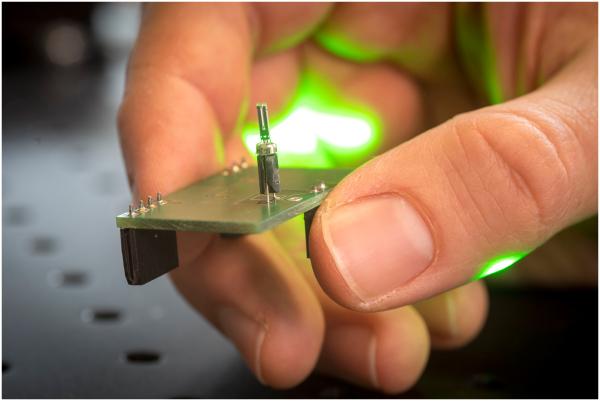As part of the Horizon 2020 research project CARES (City Air Remote Emission Sensing), an international research consortium is working on new contactless exhaust measurement methods that will enable municipalities to take emission-reducing measures. In concrete terms, the researchers want to develop new sensors that can be attached to roadsides, crash barriers or traffic signs which detect the exhaust emission of passing vehicles in a matter of seconds.
We want to monitor vehicle emissions in cities and environmental zones under real conditions, without having to interfere with free-flowing traffic. The aim is to detect the exhaust class of each individual vehicle using these measurements.—Alexander Bergmann, head of the Institute of Electronic Sensor Systems at Graz University of Technology
Bergmann and his team are primarily responsible in the project for all aspects of particle measurement.
With such sensors, cities could introduce an emissions-based city toll: the higher the emissions of the car, the higher the charge would be. Entry permits into environmental zones could also be monitored automatically, in which automatic barriers only open if the pollutant emissions of the approaching car are within the standard range. Finally, sensor technology could be used to identify and pull out of traffic those vehicles in which engine performance and thus pollutant emissions have been increased with manipulated particle filters or chip tuning.
Bergmann expects low-cost remote sensors for emission measurement to be ready for series production by the end of the 2022 project at the latest. However, he already refers to the first promising tests at the institute in which conventional tuning forks are used.
The tuning fork sensor is a first solution approach, which is pursued in the CARES project © Lunghammer – TU Graz
The particles between the fork are excited through laser pulses, which in turn produce an acoustic signal. Each individual particle emits acoustic signals which are recorded and played back by the tuning fork. The more particles there are, the louder the sound becomes. The volume can then be used to determine how many particles are in the environment.
The technology is already being used successfully for gas measurements.
Our institute was now able to show for the first time that this also works with particles and could be a possibility for a low-cost sensor.—Alexander Bergmann
The researchers at TU Graz hope that the measuring method will also prove its worth in the metropolises of Milan, Prague and Krakow, where the investigations will be carried out in live operation as part of the CARES project.
The research project CARES is funded within the Horizon 2020 Research and Innovation Program of the European Union with EUR €3.3 million and is anchored in the Field of Expertise “Information, Communication & Computing”.
CARES partners:
- Ivl Svenska Miljoeinstitutet (Lead partner; SE)
- TU Graz (Institute of Electronic Sensor Systems; Institute of Internal Combustion Engines and Thermodynamics; AT)
- Airyx Gmbh (DE)
- AMAT (Agenzia Mobilita’ Ambiente E Territorio; IT)
- AUTh (Aristotle University of Thessaloniki; GR)
- CTU (Czech Technical University in Prague; CZ)
- CULS (Czech University of Life Sciences Prague; CZ)
- EMPA (Swiss Federal Laboratories for Materials Science and Technology; CH)
- ICCT (International Council on Clean Transportation; DE)
- IIASA (International Institute for Applied Systems Analysis; AT)
- Innovhub – Stazioni Sperimentali Per L’industria (IT)
- Krakowski Alarm Smogowy (PL)
- TNO (Dutch Organisation for Applied Scientific Research; NL)
- University of Heidelberg (DE)
- University Of Leeds (GB)
- University Of York (GB)
Read more here.


